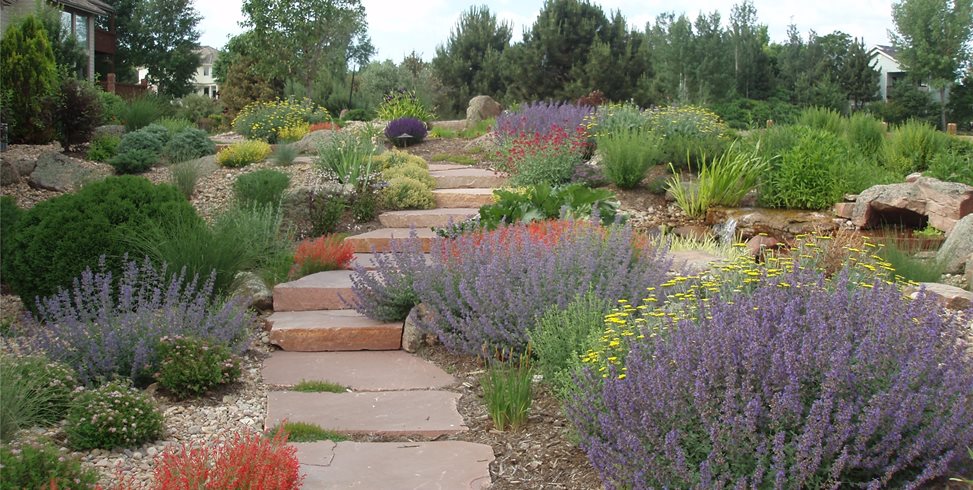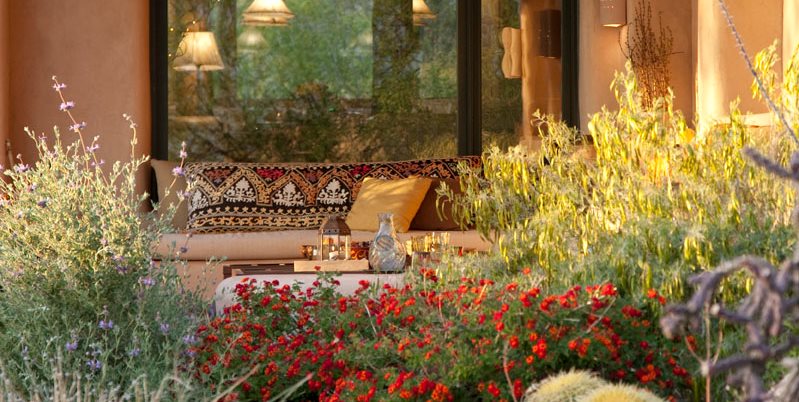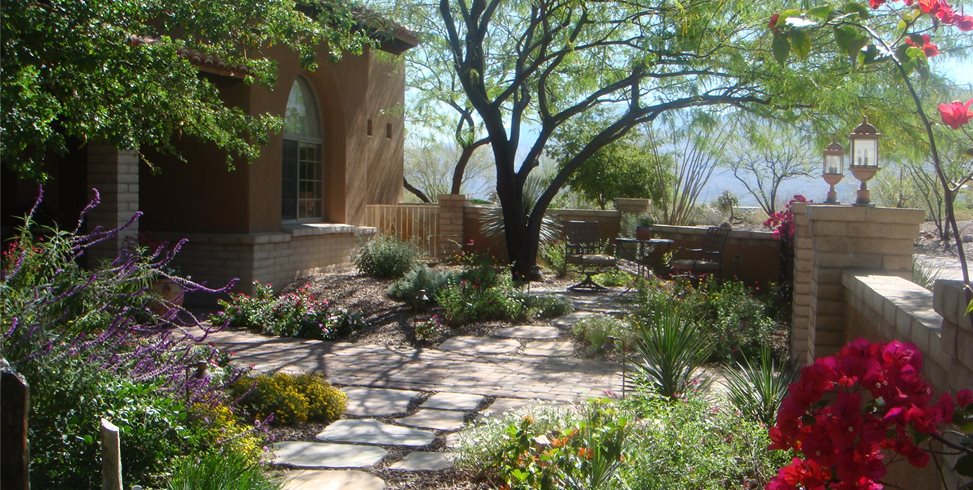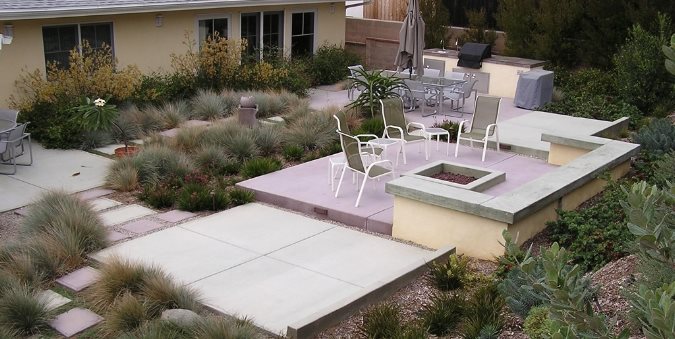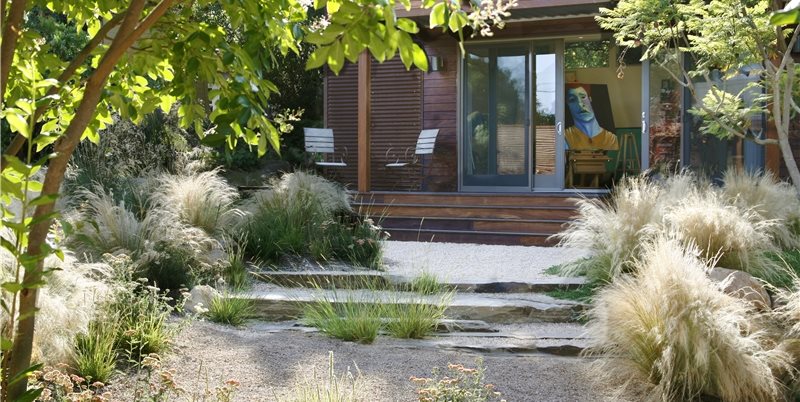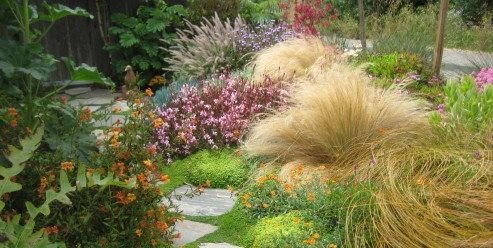Xeriscape Landscaping
Learn about xeriscaping and see examples of low-water landscapesXeriscape Style Guide
Use this design sheet to help you create the perfect xeriscape landscape. You'll get ideas for color, décor, materials, plants and fabric. It is a great starting point for any water-wise landscaping project.
Xeriscape Style Guide (PDF)
View all Landscape Design Style Guides
At its simplest, xeriscaping is about selecting plants that can thrive in the landscape with as little supplemental water as possible. This means choosing a variety of native plants, as well as other well-adapted species. However, though xeriscaping is about low-water landscaping, people who are interested in this style of landscaping often look at other ways of having a smaller footprint on the planet.
A number of things can spur an interest in xeriscaping. Many regions restrict the use of water on landscapes, so choosing xeric plants is one way of having a beautiful garden even while watering less. Other people are interested in the environmental benefits of planting natives and using fewer resources. Lastly, xeriscaping is an effective way of saving both time and money in the landscape, a benefit which everybody can appreciate.
Beyond plant selection, there are other ways of reducing water use in the landscape. Replacing thirsty lawns with either patios or xeric plantings can cut your water use by 80% or more, and even eliminating a little bit of lawn will help. Another way of making the most of the resources on your site is by using grading and soil contouring to guide every bit of available moisture to a place in the landscape where it can be used, such as a rain garden.
While you may think the point of a xeriscape is that you don't have to water, in fact even xeric plants will need some water. During the first two summers, thorough watering at regular intervals will allow plants to develop the deep root systems they need to become strong. Once plants are mature, most people still water their landscape about once per week during the hottest times of the year. That's why professional landscapers consider a drip irrigation system a must for nearly all xeriscapes.
However, if you want to reduce your reliance on the city's water supply, look into rainwater harvesting, where you collect winter rainfall into barrels or underground tanks. Almost every brand of rain barrel or underground cistern can be hooked up to your drip irrigation system to make it easy to use this free, yearly source of water. While the most convenient professionally-installed setups start at $5000, there are rainwater harvesting options for nearly any budget, and rebates from your city or water company can bring down the price even more.
Though all landscaping has the potential to bring people closer to nature, people with a xeriscape may find an even deeper connection to the world around them. As you become accustomed to the natural cycles of the native plants growing in your garden, you'll notice the same plants and cycles when you go out into parks and wild areas. When you grow plants at home, you develop an understanding and a feeling of kinship with them, which can translate into a feeling of connection with the greater world around you.
Whether your interest in xeriscaping stems from wanting to save money, the environmental benefits of using fewer resources, or a desire to get away from the constant maintenance of the usual lawn-and-flowerbed style garden, the professional tips in this section will help you achieve your goal of planting a low-water landscape that is every bit as satisfying and beautiful as the traditional landscapes we've grown accustomed to.

 Backyards
Backyards
 Front Yards
Front Yards
